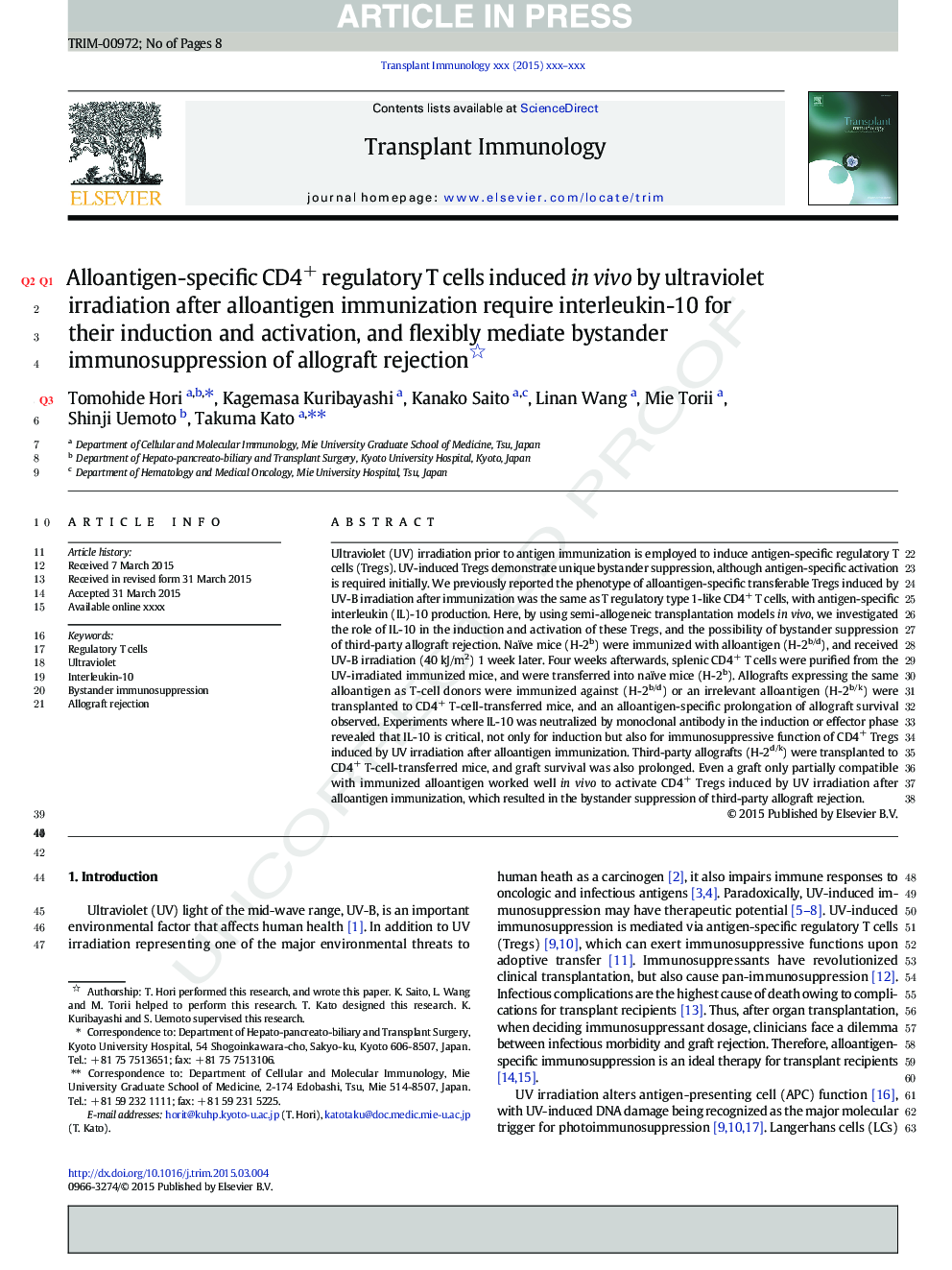| Article ID | Journal | Published Year | Pages | File Type |
|---|---|---|---|---|
| 6125985 | Transplant Immunology | 2015 | 8 Pages |
Abstract
Ultraviolet (UV) irradiation prior to antigen immunization is employed to induce antigen-specific regulatory T cells (Tregs). UV-induced Tregs demonstrate unique bystander suppression, although antigen-specific activation is required initially. We previously reported the phenotype of alloantigen-specific transferable Tregs induced by UV-B irradiation after immunization was the same as T regulatory type 1-like CD4+ T cells, with antigen-specific interleukin (IL)-10 production. Here, by using semi-allogeneic transplantation models in vivo, we investigated the role of IL-10 in the induction and activation of these Tregs, and the possibility of bystander suppression of third-party allograft rejection. Naïve mice (H-2b) were immunized with alloantigen (H-2b/d), and received UV-B irradiation (40Â kJ/m2) 1Â week later. Four weeks afterwards, splenic CD4+ T cells were purified from the UV-irradiated immunized mice, and were transferred into naïve mice (H-2b). Allografts expressing the same alloantigen as T-cell donors were immunized against (H-2b/d) or an irrelevant alloantigen (H-2b/k) were transplanted to CD4+ T-cell-transferred mice, and an alloantigen-specific prolongation of allograft survival observed. Experiments where IL-10 was neutralized by monoclonal antibody in the induction or effector phase revealed that IL-10 is critical, not only for induction but also for immunosuppressive function of CD4+ Tregs induced by UV irradiation after alloantigen immunization. Third-party allografts (H-2d/k) were transplanted to CD4+ T-cell-transferred mice, and graft survival was also prolonged. Even a graft only partially compatible with immunized alloantigen worked well in vivo to activate CD4+ Tregs induced by UV irradiation after alloantigen immunization, which resulted in the bystander suppression of third-party allograft rejection.
Related Topics
Life Sciences
Immunology and Microbiology
Immunology
Authors
Tomohide Hori, Kagemasa Kuribayashi, Kanako Saito, Linan Wang, Mie Torii, Shinji Uemoto, Takuma Kato,
